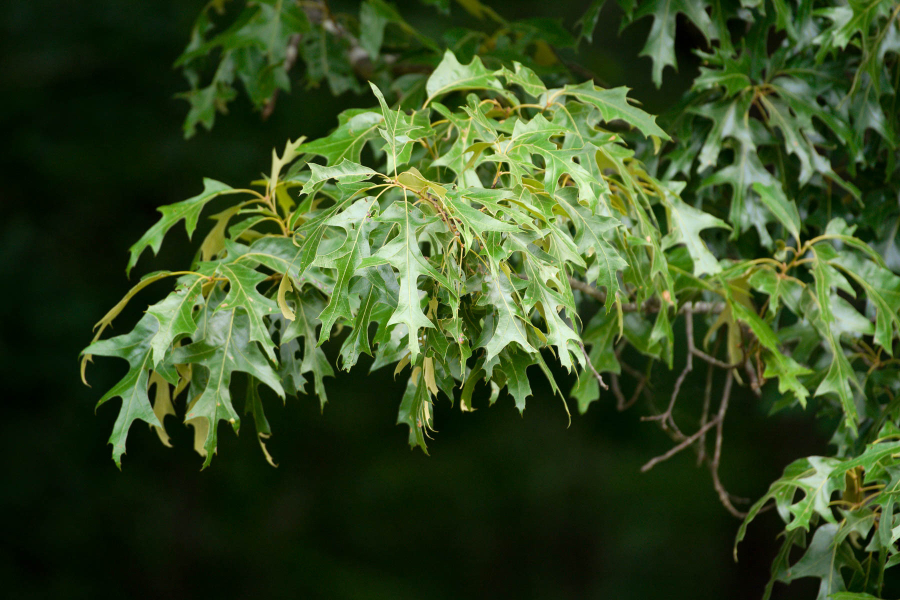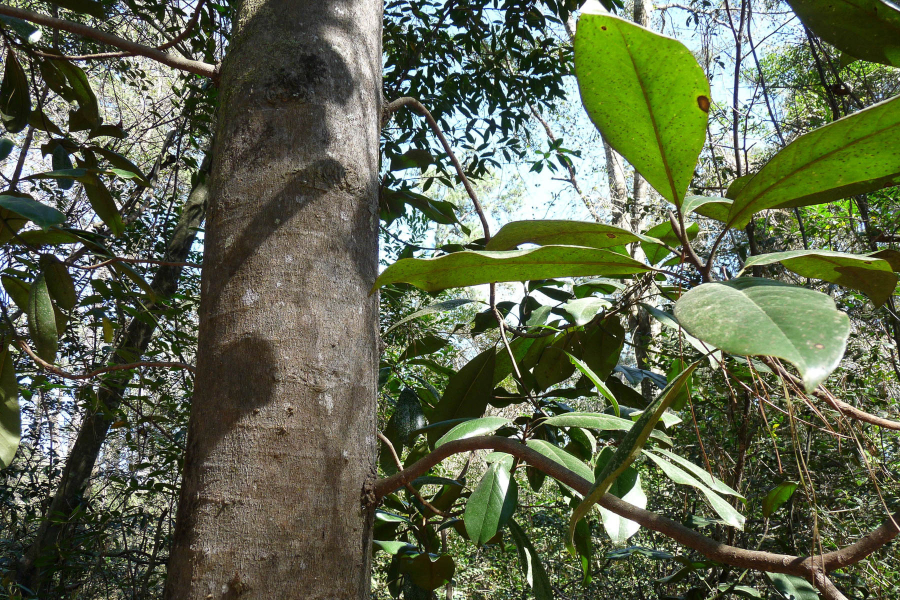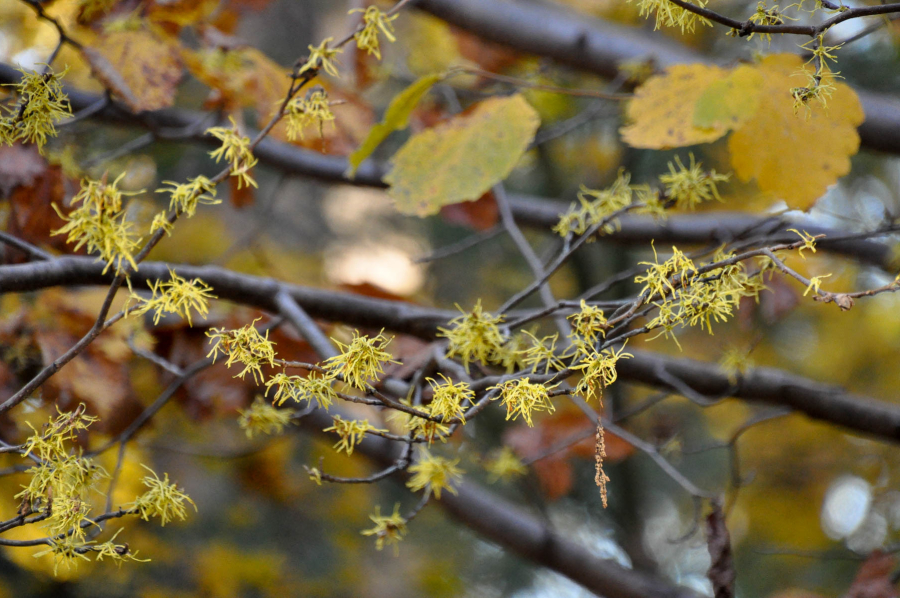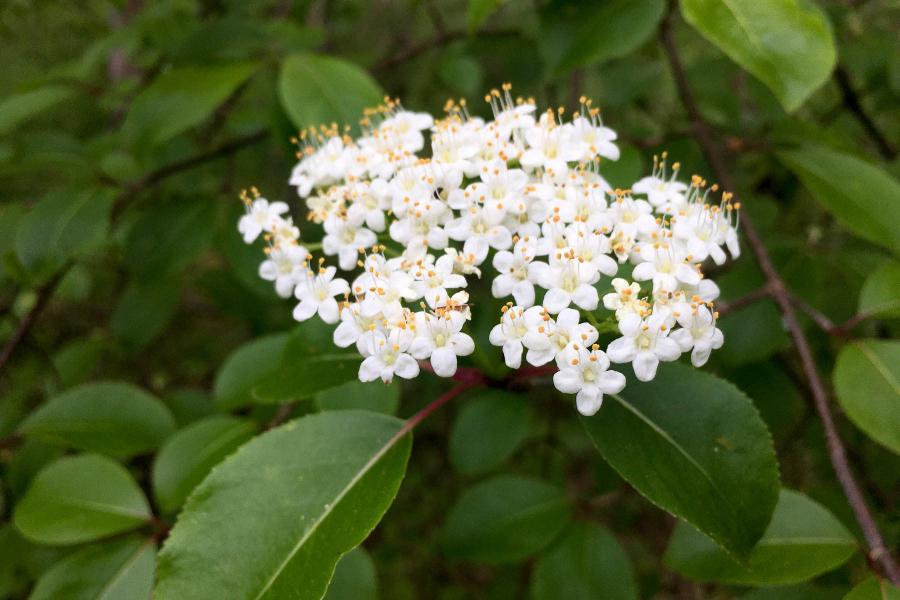Five tree species to plant in the Chesapeake region
Use these North American trees and shrubs to brighten up your property and benefit wildlife

Tree species, like clothing, go in and out of style. Popular magazines and gardening influencers can dictate the plants that people want on their property, which doesn’t always match the species that nurseries have invested in and that benefit wildlife.
Researchers at the University of Maryland’s Burghardt Lab are trying to bridge that gap. Through surveys and research, they’re figuring out which tree species growers want to grow and planters want to plant, to make sure there’s a demand for the supply.
According to the lab, the following five trees and shrubs are the “tried and true” species that are great for the environment but also popular among tree planters. They’re like the classic little black dress that you can always count on. Learn more about the benefits they provide to wildlife and where they should be planted.

Southern red oak
The southern red oak is a large native tree that can grow up to 80 feet tall. It is commonly found in dry, upland sites—areas above sea level where flooding typically does not occur—with sandy soil. Southern red oaks are known to grow in degraded soils and not as vigorously when conditions are ideal. It is also a climate adaptive species. The large root system helps to prevent soil erosion and the large crown—or top of the tree—provides valuable shade cover. Since the acorns stay dormant over winter, they are an excellent food source for wildlife. Waterfowl, wild turkeys, blue jays, red-headed woodpeckers, red-bellied woodpeckers, white-breasted nuthatches, common grackles, raccoons, white-tailed deer and squirrels eat the acorns.

Swamp chestnut oak
The swamp chestnut oak is a long-lived and slow growing tree found in floodplains, swamps and forests in the southeast. Despite its native habitat in moist soils, it does surprisingly well as a street tree. Once it is established, it doesn’t require any irrigation. Swamp chestnut oaks are tall trees with a narrow crown. When fully grown, the bottom 40 feet of the tree will often not have branches, which makes it a good fit for narrow spaces. The swamp chestnut oak is an important food source for many pollinators and the acorns are eaten by birds, mammals and white-tailed deer.

Southern magnolia
The southern magnolia is a large tree known for its waxy evergreen leaves and large white flowers. The flowers develop from late-spring to early-summer, while cone-shaped fruits develop in the fall. The fruits are consumed by a wide variety of birds including wild turkeys, cedar waxwings, mockingbirds, orioles, northern cardinals, titmice, thrushes, warblers, finches, thrashers, chickadees, grosbeaks, crows, jays, sparrows, nuthatches, vireos, hummingbirds, quails, woodpeckers and wrens. Southern magnolias are fast-growing trees that can be excellent for landscape planting. Even though they are native to the south, they can reliably overwinter as far north as Pennsylvania, Virginia, West Virginia, Delaware, Maryland and Washington D.C. (zone six) of the U.S. Department of Agriculture’s Plant Hardiness Zone Map. These are large trees and their crowns need plenty of space to spread.

Witchhazel
Witchhazel is a large shrub that can grow up to 30 feet tall. This tree produces small yellow flowers in late fall that look beautiful in the landscape and can be a great source of late season pollen for pollinators. The shrub also produces small fruits every fall that are eaten by birds including the ruffed grouse, northern bobwhite, and wild turkey. If planting in a home garden, place witchhazel on the north side of your home or in semi-shaded habitats. It prefers rich moist soils and requires regular watering when being established.

Blackhaw viburnum
Blackhaw viburnum is a versatile shrub that can be grown in a variety of locations. Although it is native to woodlands and streambanks, it can tolerate a variety of conditions. It is easily grown in dry to medium, well-drained soil and can be planted in full sun or partial shade. The dark green leaves, spring flower clusters and fall colors make this a great addition to any landscape. The shrub produces edible fruits that are attractive to mammals and birds. It is also the host plant for the pink prominent moth and the green marvel moth, which means that the juvenile stage of these species prefer the plant for food and shelter.
It is always important to plant the right tree in the right place. With a wide variety of trees available at nurseries, we can plant the best species for the conditions at each planting site. For more ideas on what tree species to plant, download the Burghardt Lab’s list for tree planters. To learn more about plants and trees native to the Chesapeake region, visit our Field Guide.

Comments
There are no comments.
Thank you!
Your comment has been received. Before it can be published, the comment will be reviewed by our team to ensure it adheres with our rules of engagement.
Back to recent stories